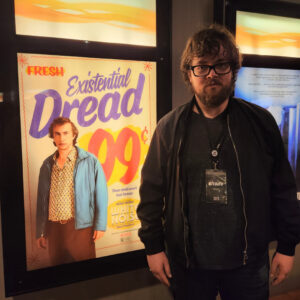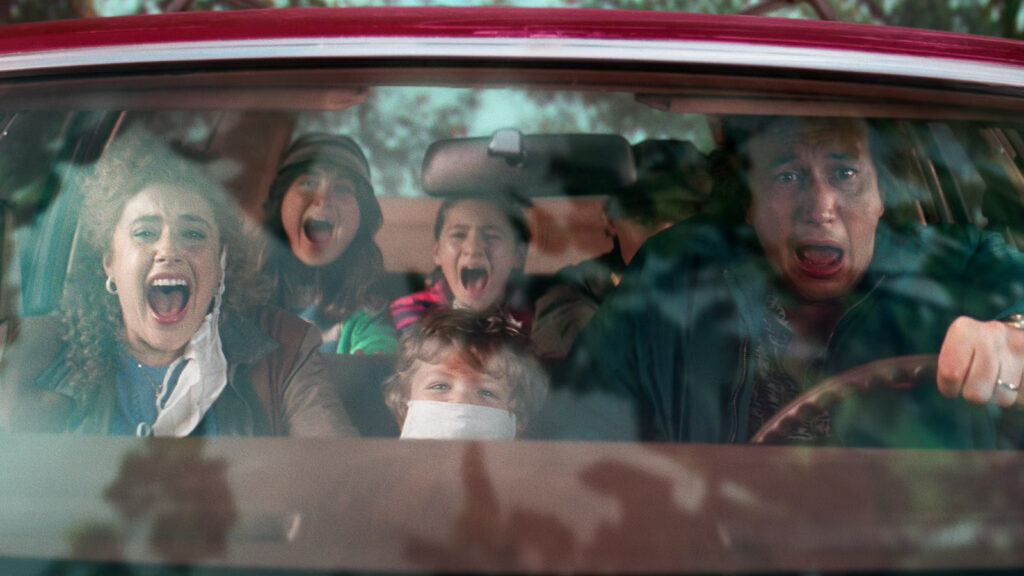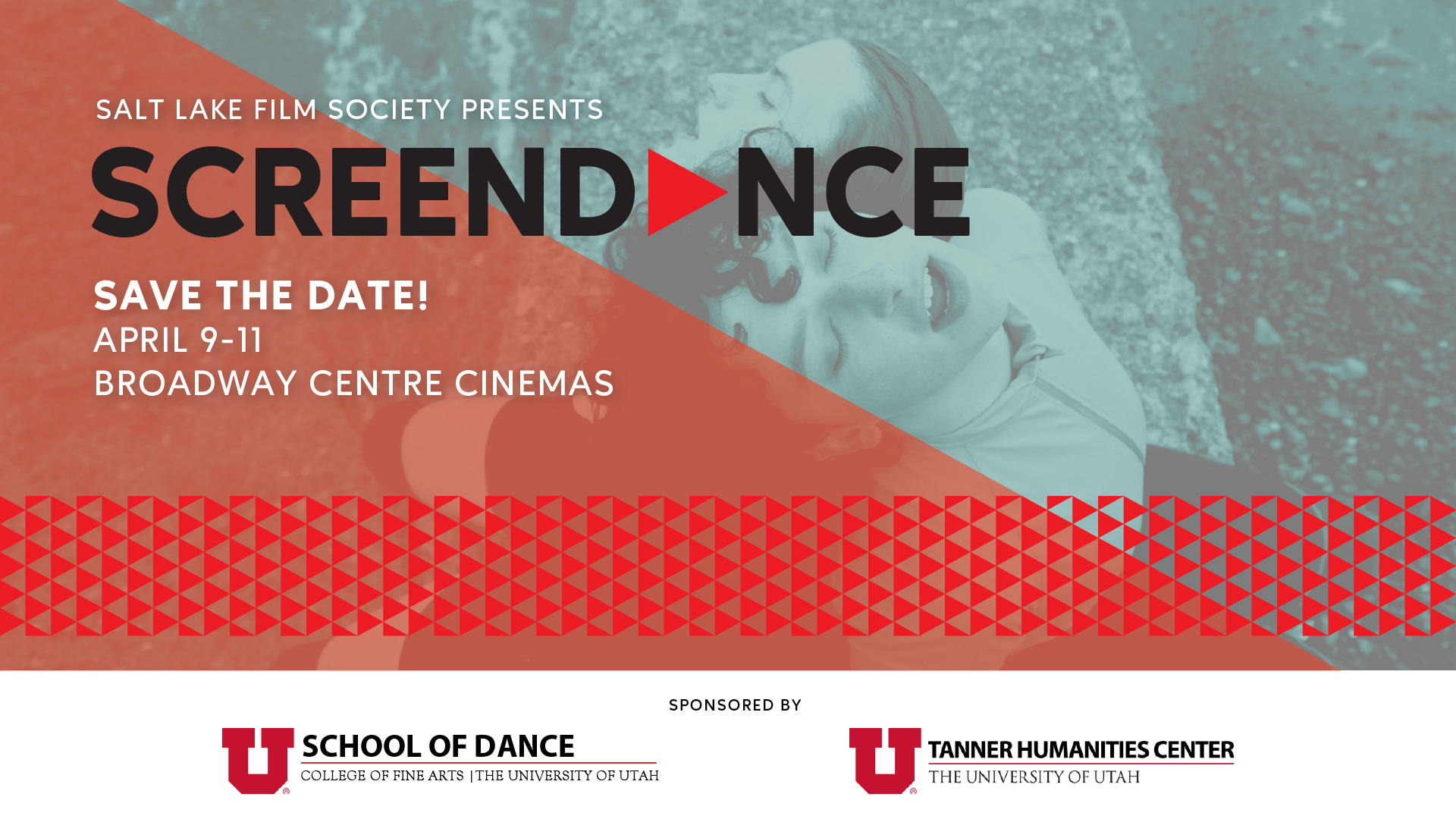At Salt Lake Film Society, we take a lot of pride in providing access to the movie theater experience. For many films and visual stories, the very nature of their production and exhibition is designed to be watched on the big screen, shared in a movie theater with others. In our blog this week, we hear from Landon Adams, Theater Manager at Broadway Centre Cinemas, and how his experience watching White Noise was enhanced through the movie theater experience.
“Watching a film in a theater is a profound sensory experience. We become entranced by both the screen in front of us, and the audience surrounding us. In Noah Baumbach’s White Noise, characters speak of the supermarket as a spiritual haven, a temple broadcasting soothing psychic data composed of words, images, colors and sounds. The cinema’s function is the very same.

The plot of the film concerns the exploits of the blended Gladney family. The main protagonist, J.A.K. Gladney (played by Adam Driver), is a professor of Hitler studies, who in an early scene waxes poetically to a group of wide-eyed college students about the allure of the crowd. They hang onto his every word on topics ranging from “deathward” plots, to mob mentality and the power of the collective. Their awe feeds into Jack’s sense of immortality in an unwitting ritual that summons the dark cloud of Jack’s tentative demise and sets the wheels of our story in motion.
It’s in the aforementioned lecture that Jack, pointing out into the lecture hall, singles out a terrified student as a member of the future dead. We see this moment in a POV shot, from the viewpoint of the student. Jack Gladney points directly into the camera, pointing at both the student, and projected overhead on a 45 foot screen, pointing into the theater at us. If we were watching this on TV, we might miss that throughout the film Jack is aware of us, speaks to us, asking us in states between wakefulness and dreaming, “Who are you?” So attuned to the crowd, he senses us even when alone in his room in the dead of night.
For the duration of the movie we are invited into various crowded scenes: An overstuffed home, a bustling campus, evacuation camps, supermarkets, even roadways; traffic stretching out past the horizon toward infinity. The characters’ relation to these crowds is ever-shifting. Sometimes they are leaders, sometimes members. They often look to these crowds to measure themselves and source how they should feel, or how they should act. They find comfort in crowds, a sense of subconscious immortality borne out of an esoteric reinforcement, the comfort from “the collective”.
The film opens with a monologue over a montage of car crash stunts. The monologue asserts that these crashes are a highlight reel, representing innovation and optimism. This opening contextualizes what happens later in the film while Jack is driving down the highway. In the midst of a crisis our cast witnesses an accident, or at least the children do. When it happens, Jack is looking away.
Again we see the action as a POV shot, this time inhabiting the viewpoint of Jack’s children. A car rushes into the frame, overturning in a blink-and-you-miss-it moment, and when it occurs, Jack is looking away, into the camera, as if watching for our reaction, to determine from us, the audience, how he should feel.

The movie theater provides a communal experience, often complex and of multi-dimensions. We gather under the flashing lights of the big screen and allow ourselves to sink into the story, letting our worries fall away across a paltry runtime. Sharing this with an audience makes the spell all the more potent. The people surrounding us help transform the experience by virtue of their presence and individual experiences.
It’s these fellow movie-goers, these crowds of eager enthusiasts, who breathe life into a film, and ground us in the experience. It’s our physical presence with others that creates and completes this unwitting ritual, just as in the film. Acting as kindred travelers on the cinematic highway, we escape down reality’s off-ramp toward the open-road comfort of the surreal, where together we are immortal beneath the silver screen of the theater.”



